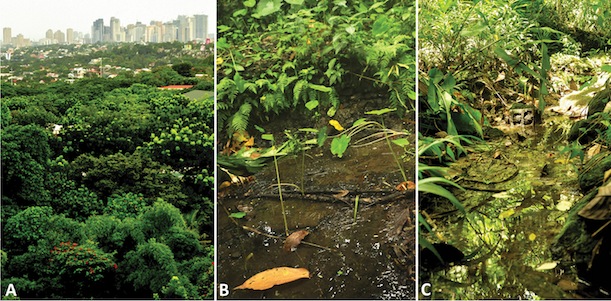A New Beetle Species Was Just Discovered Right Outside the World’s Densest City
Hydraena ateneo, a previously unknown water beetle, was found living in the forested creeks of a university’s campus near Manila, Philippines
/https://tf-cmsv2-smithsonianmag-media.s3.amazonaws.com/filer/new-beetle-631.jpg)
The city of Manila, in the Philippines, is home to more than 1.6 million people, packed into an area smaller than 15 square miles—less than a quarter of the size of Washington, D.C. It’s the most densely populated city in the world. Metropolitan Manila, with a population of some 12 million people, is the 10th largest megacity.
This dense urban environment seems like an unlikely place to find a new species. But within the jumble of markets, alleys and skyscrapers of this megacity, Ateneo de Manila University has preserved a 200-acre tract of forested campus, interlaced by ponds and small creeks. Recently, when the university’s biology students and faculty conducted a survey of the forest, they found something remarkable: a new species of water beetle, called Hydraena ateneo, which was previously unknown to science.

The new species was found in small pools and slow-moving creeks on the university’s wooded campus in Manila. Image via ZooKeys/Freitag et. al.
The group of undergraduates, led by entomologist Hendrik Freitag, announced the news yesterday in an article published in ZooKeys.
The students—Arielle Vidal and Kimberly Go—collected a few dozen closely-related water beetles from shallow rock pools and slow-moving creeks on the heavily forested campus. The insects were feeding on the bacteria and fungi that get trapped in leaf litter.
An analysis showed that the beetles mostly came from six known species, but there were four from a new, unidentified one. The unfamiliar beetles (named ateno after the university) could be differentiated from similar species by slight differences in their size (they range between 1.25 and 1.33 millimeters in length, whereas the closely-related scabara are slightly longer and the palawanensis are a bit shorter), their leg structure and the shape of their aedeagus, the male reproductive organ.
When Freitag compared them to similar beetles housed in the collections of natural history museums in Germany, Denmark and Austria, he found several ateneo specimens that had previously been collected in the Philippines but were unidentified. The group has also since found the new species outside the city, on the island of Mindoro. They speculate that the bug occurs most often in more remote areas, but recolonized the college campus sometime over the past 50 years, as the campus’s formerly sparse forests and dried-up creeks have been allowed to regenerate over that period.
The fact that the beetle repopulated the campus demonstrates the surprising amount of biodiversity that can occur even in the tiny niches that survive among heavy human development—especially in an already biologically rich country like the Philippines. This is the thinking behind the UN’s Urban Biodiversity program and calls to preserve small natural habitats interspersed between the roads and buildings we construct.
Freitag believes that many more unknown species are there to be found within the barely studied Hydraena genus of this newly discovered water beetle. That an unidentified species can be found hiding in an urban college campus, right under our feet, shows just how much of the world’s biodiversity is still yet to be cataloged by science.
Editor’s Note, September 7, 2013: Earlier versions of this post incorrectly stated or implied Ateneo de Manila University was in Manila itself. In fact, the university is in nearby Quezon City, which is a part of Manila’s metropolitan area. To fix this, a few sentences were added to the first and second paragraphs, and the title of the post was changed.
/https://tf-cmsv2-smithsonianmag-media.s3.amazonaws.com/accounts/headshot/joseph-stromberg-240.jpg)
/https://tf-cmsv2-smithsonianmag-media.s3.amazonaws.com/accounts/headshot/joseph-stromberg-240.jpg)